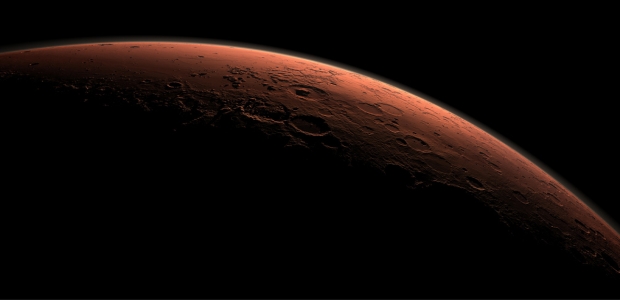Scientists and astronomers of NASA seem to be making great strides in the Mars Exploration Mission. In today’s space age when we seek answers about the infinite boundaries of space, here is a planet close to ours which gives encouraging signs day after day.
The first full-depth hole drilled in a Martian rock by NASA’s rover Curiosity has revealed what could be a former habitable environment, team scientists announced on March 12th.
The drilled bedrock, named John Klein after a former deputy project manager, appears to lie in an ancient network of stream channels descending from Gale Crater’s rim. By weight the rock is 20-30% smectite, a group of clay minerals that form in the presence of water. The water wasn’t too salty, and the presence of calcium sulfates indicates it probably had a relatively neutral pH. All told, the results suggest that this region, called Yellow Knife Bay, was once some sort of lake-bed. This particular environment according to project scientist John Grotzinger is so benign and supportive of life that if this water was still around and we had been on the planet, we would have been able to drink it!
How large, deep, or long-lived this lake-bed was, the scientists can’t say. They also can’t give a good estimate of when it existed, although the ballpark estimate is 3 billion years ago. That’s within a few hundred million years of when scientists think life arose on Earth. Elements identified by one of Curiosity’s instruments include oxygen, hydrogen, sulfur, and phosphorus. But what has really got the scientists excited is the hint of carbon and organic compounds. Because this is the drill system’s first use, it’s unclear whether the compounds are natural to Mars or residual contaminants.

What’s also exciting is that the rock contains sulfur compounds in both oxidized and unoxidized forms. This combination could have created an “energy gradient,” a chemical battery that could have powered primitive microorganisms. Another interesting fact is if there is the presence of carbon, the microbes could be able to use it for metabolism. None of these initial results mean that microbes actually existed on Mars.
The Curiosity team plans to drill again to confirm the findings. There was a delay due to technical problems in which case a rover reboot was required which in turn delayed the operations. This was coupled with solar conjunction which blocked communication with the rover during much of April. But later in April and May Curiosity went into an autonomous operation mode for approximately 25 days during Earth-Mars solar conjunction. Once Curiosity finishes up at John Klein, it will head for Gale Crater’s central mound. En route it will continue taking samples to check how rock compositions change on approach, which will hopefully help scientists determine the mound’s origin.
There is definitely something interesting to look forward to. Maybe that was one of the reasons for extending the 2 year Curiosity mission indefinitely. The rover is currently on an autonomous mission. We will keep tracking this path breaking exploration which could solve many mysteries of life in space.

































